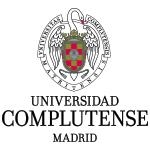Abattoir Surveillance: Identifying Risk Factors Associated with Bovine Tuberculosis Lesion Detection in a Low Prevalence Region
Preventive Veterinary Medicine publica este artículo de investigación
1 de enero de 2026
Abattoir surveillance is a key component in control and eradication programs against bovine tuberculosis (bTB). In low-prevalence or officially tuberculosis-free (OTF) regions in which active surveillance is typically limited or non-existent, postmortem inspection at the abattoir constitutes one of the main diagnostic tool to guarantee the absence of disease transmission. Here, we evaluated the performance of abattoir postmortem inspection in Galicia, a low-prevalence region in Spain (now OTF). Between 2014 and 2019, 1,784,261 animals were culled in 41 abattoirs, of which a small proportion (0.74%, n=13,200) were reactors in bTB antemortem tests. Two mixed-effects logistic regression models assessed the risk of detecting bTB-compatible lesions adjusting for potential confounding factors (age, sex, breed, production type, herd size, location, year and season of slaughter, and antemortem bTB test results) while accounting for the lack of independence between animals from the same herd/slaughtered in the same abattoir. Lesions were detected in 0.013% (n = 223 animals) and 2.3% (n = 301 animals) of all the non-reactor and reactor slaughtered animals, respectively, and were confirmed through culture in 9.0% and 29.9% of the bTB-lesioned non-reactor and reactor animals. Probability of bTB-like lesion detection varied considerably between abattoirs and was influenced by several animal and farm-level factors: in non-reactors older beef cattle slaughtered in certain years were at higher risk, while in reactors beef cattle from certain provinces and years with a high skin fold thickness increase had a higher probability. These results provide important baseline data on the performance of passive surveillance in low-prevalence settings and offer valuable insights for enhancing bTB surveillance and control strategies
Gómez-Buendía A., Triguero-Ocana R., Pozo P., Munoz-Mendoza M., Alvarez-Fidalgo M., Mourelo J., Romero B. y Alvarez J..
 | Servicio de Micobacterias (MYC). Centro de Vigilancia Sanitaria Veterinaria (VISAVET). Universidad Complutense (UCM). |
 | Departamento de Sanidad Animal. Facultad de Veterinaria. Universidad Complutense (UCM). |
| Servicio de Sanidad Animal. Consellería do Medio Rural. Xunta de Galicia. | |
